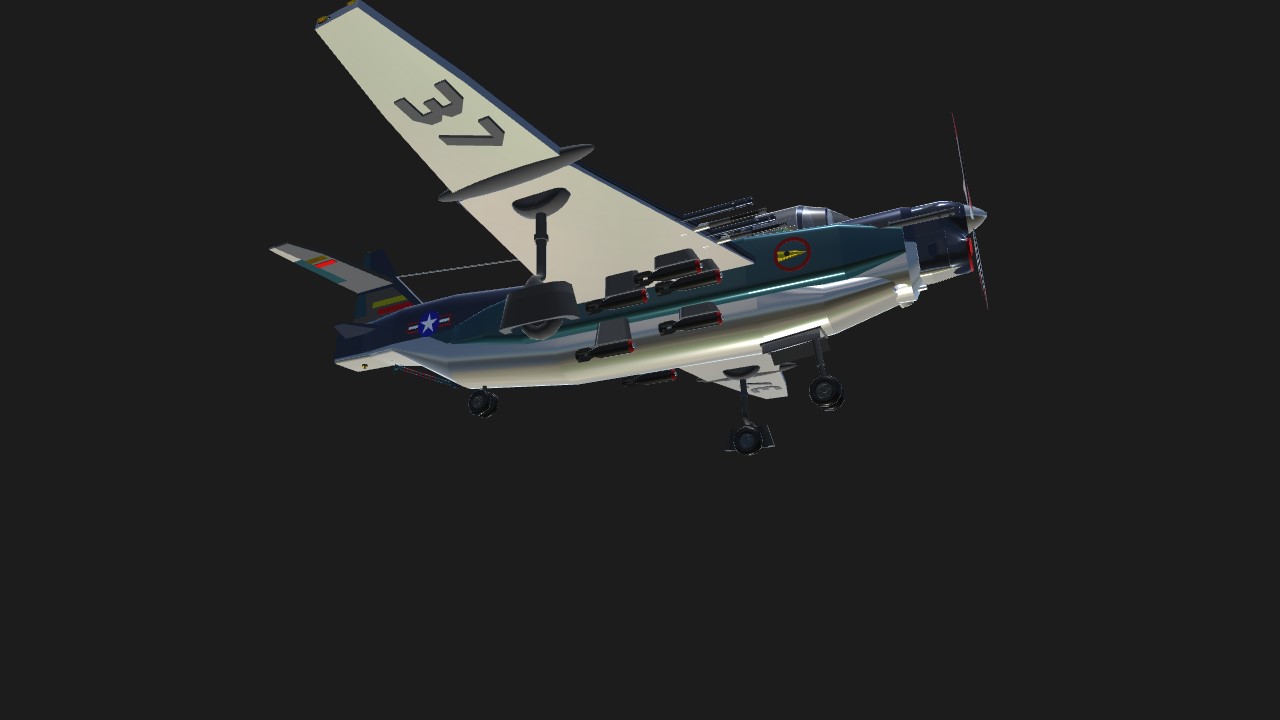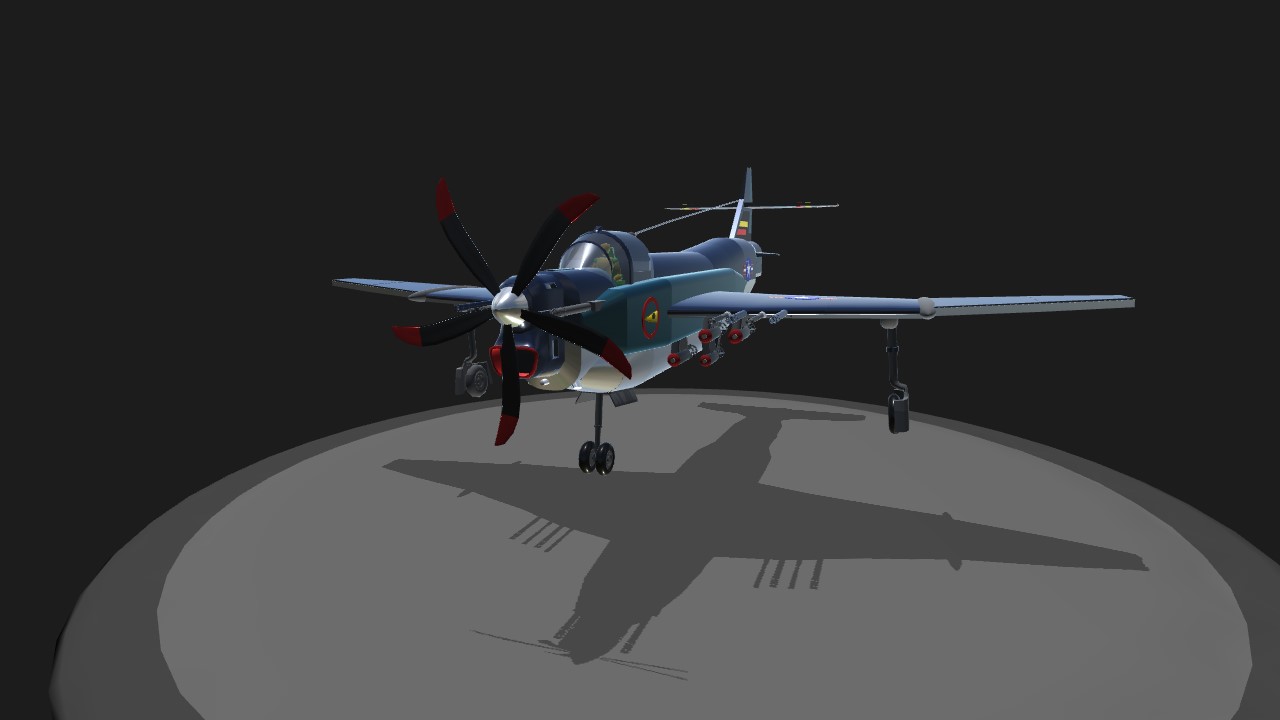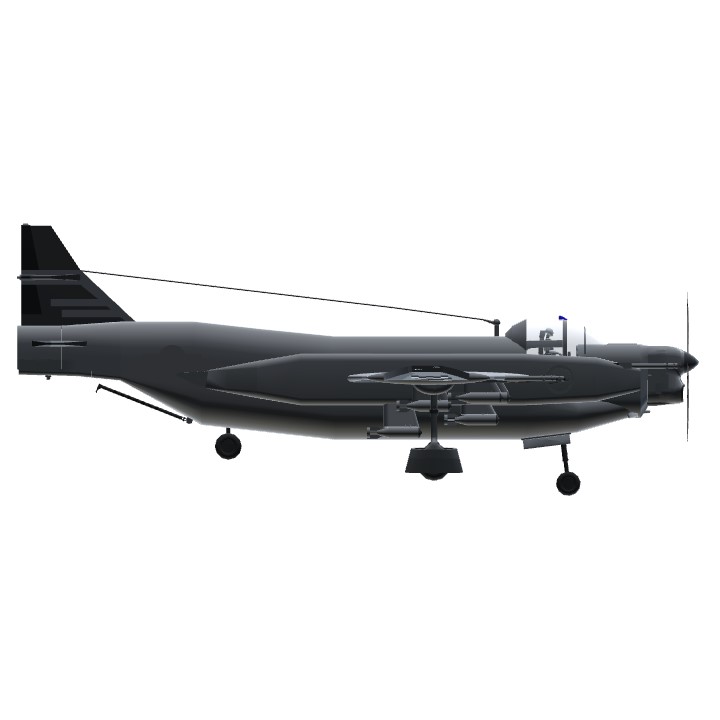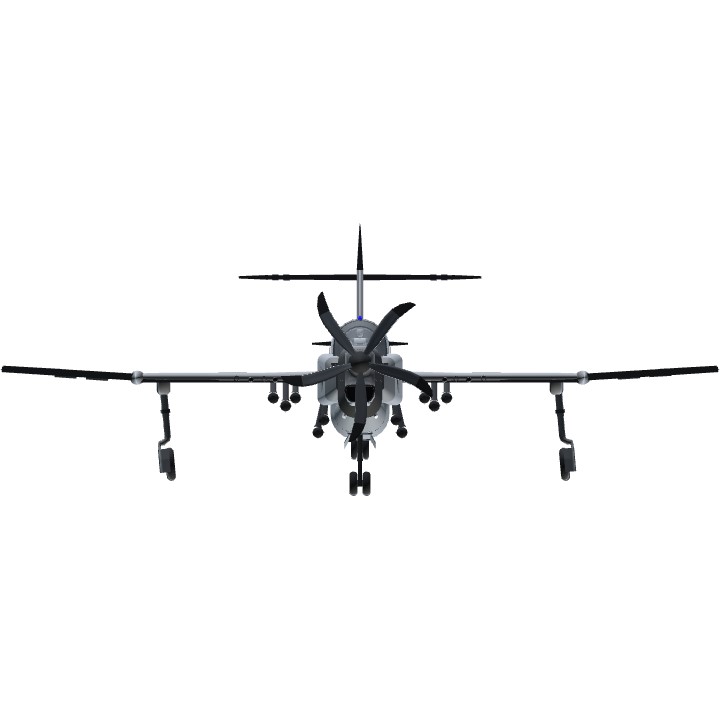Challenge: Dive Bomber, WWII, Fictional
U.S. Navy Air Corps
*Action Groups*
AG 1: Arrestor Hook
AG 2: Navigation Lights
AG 3: Drop wing mounted bombs
*Weapons*
6 x Machine Guns
4 x Auto Cannons: Use ground based weapon option to access.
10 x 250 lbs. Bombs
*Operations*
Its a bit touchy on the stick. For the cargo transport run, ensure to deploy bombs as evenly and quickly as possible to avoid upsetting the dynamics of the plane. Also, make sure NOT to release bombs too soon during a dive as you might outrun them and hit your own plane! Cannons are a good secondary option for taking out ground based targets, though do not have a massive area of effect, so a little luck is required. Carrier take off: use full trim and full throttle. Carrier landing: as you approach and line-up, throttle down to 25% or less, use arrestor hook early.
*Write Up/Notes/Fictional History Stuff*
I haven't built in a long while, but as usual I just started building without looking real world examples.
On a fictional history idea: Grumman developed this plane in the late war to post-war era (c. 1944-48) as turbo props become the norm but before jets became widely available. The "Golden Marlin" was to be used primarily for Naval operations, though its lack of folding wings would eventually lead it to island-based rather than carrier-based operations in the Pacific. The "Goldie", as some airmen called it, was well known for its reliability, long range, and its ability to fill roles beyond its initial dive-bomber status. However, the Goldie had a tendency to "roll and pull" with uneven bomb loads which forced pilots to often ditch unused munitions before landings. It was also bit of "matchstick" due its larger fuel capacity. It also had a "wobbly stick" which lead to some inexperienced pilots crashing it. Like many WWII aircraft, the Goldie was retrofitted with many post-productions mods, including a second set of stabilizers/elevators to try to give the aircraft a better chance of recovering from a dive. The Goldie's other experimental feature, which would be used on early jet aircraft, was high-set primary stabilizers.
Specifications
General Characteristics
- Predecessor WW2 (Fictional) Fighter Challenge! [CLOSED]
- Successors 1 airplane(s) +7 bonus
- Created On Windows
- Wingspan 40.0ft (12.2m)
- Length 38.1ft (11.6m)
- Height 15.1ft (4.6m)
- Empty Weight 7,222lbs (3,276kg)
- Loaded Weight 8,698lbs (3,945kg)
Performance
- Horse Power/Weight Ratio 0.344
- Wing Loading 21.5lbs/ft2 (104.9kg/m2)
- Wing Area 404.6ft2 (37.6m2)
- Drag Points 2555
Parts
- Number of Parts 237
- Control Surfaces 16
- Performance Cost 979







Awesome! Can't wait to fly it